














Missouri Artist On Main 315 – 321 South Main St., St. Charles MO 63301
(636) 724-1260 http://www.maomgallery.com/
Types of Pottery
Pottery usually falls into three main classes—porous-bodied pottery, stoneware, and porcelain. Raw clay is transformed into a porous pottery when it is heated to a temperature of about 500 degrees Celsius. This pottery, unlike sun-dried clay, retains a permanent shape and does not disintegrate in water. Porous bodied pottery is not waterproof, meaning that liquids will leak through the body of the pot. Stoneware is produced by raising the temperature, and porcelain is baked at still greater heat. In these two processes the clay becomes vitrified (able to hold liquid), or glassy, and the strength of the pottery is increased.
Pottery is one of the most enduring materials known to humankind. In most places it is the oldest and most widespread art; primitive peoples the world over have fashioned pots and bowls of baked clay for their daily use. Prehistoric (sometimes Neolithic) remains of pottery, e.g., in Scandinavia, England, France, Italy, Greece, and North and South America, have proved of great importance in archaeology and have often supplied a means of dating and establishing an early chronology. Some of the oldest pottery has been found in Japan and China, dated to at least 16,000 and 20,000 years old respectively. Pottery has also been of value as historical and literary records; ancient Assyrian and Babylonian writings have been inscribed upon clay tablets. Simple geometric patterns in monochrome, polychrome, or incised work are common to pottery of prehistoric and primitive cultures.
American art pottery flourished in the first half of the 20th cent., with works created by a variety of artisans, many of whom were employed by companies such as the Rookwood Pottery and Cincinnati Art Pottery. Much collected in the decades that followed, this art pottery was created in such styles as art nouveau, arts and crafts, and art deco. In addition, many of the major artists of the 20th cent. created exquisite ceramic works. Especially notable are those by Picasso, Matisse, and Miro. In spite of the continuing development of mass-production techniques and synthetic materials, the demand for hand-crafted ware of fine quality has not diminished. A variety of artisans make utilitarian objects as well as works of art using many methods of pottery production.
Missouri Artist On Main exhibits several different techniques of modern American pottery. One way of differentiating between these is to define the work by the type of kiln in which the pottery is fired.
American Raku
 American Raku by MAOM potter Holly Deckard
American Raku by MAOM potter Holly Deckard
American-style raku differs in a number of ways from traditional Japanese Raku, notably the rich black surface produced by smoking the ware outside the kiln at the end of firing, and the fact that American raku remains porous. Other innovations include the quenching of the red-hot vessel in cold water, the production of brilliant and many-colored copper lustres, the forced crackling of the glaze with smoke penetration, the white line halo or ghost image surrounding a black metallic decoration, and the discovery of a copper slip that sometimes results in an unusual yellow matte surface.
 American Raku by MAOM potter Holly Deckard with examples of copper luster.
American Raku by MAOM potter Holly Deckard with examples of copper luster.
In the spirit of raku, one must embrace the element of surprise. There can be no fear of losing what was once planned and there must be an urge to grow along with the discovery of the unknown. In the spirit of raku, make no demands, expect nothing, follow no absolute plan, be secure in change. Learn to accept another solution, and prefer to gamble on intuition. American raku is still porous meaning that the object is not vitrified thus not able to hold liquid. American raku is prized for its decorative element rather than function.
Reduction Fired pottery
 Reduction fired porcelain dinnerware by MAOM potter Angel Brame.
Reduction fired porcelain dinnerware by MAOM potter Angel Brame.
There are many factors to consider when it comes to firing your pottery in a kiln. The term reduction refer to how much oxygen is in the kiln’s atmosphere while the kiln is firing. An oxidation atmosphere has plenty of oxygen for the fuel to burn. A reduction atmosphere occurs when the amount of available oxygen is reduced.
 Reduction fired porcelain baking dish by MAOM potter Angel Brame.
Reduction fired porcelain baking dish by MAOM potter Angel Brame.
Fire requires oxygen to burn. When there is a lack of oxygen, the fuel does not burn completely and the kiln atmosphere becomes filled with free carbon. The free carbon atoms will aggressively grab up any oxygen atoms they can find. In fact, carbon atoms are so oxygen-hungry that they are able to break molecular bonds. The carbon literally robs the clay and glaze materials of their oxygen. When the carbon reduces the amount of oxygen in the clay and glaze molecules, the colors and textures of the clays and glazes can change. These changes can sometimes be quite dramatic.
Atmospheric Firing
 Jar by MAOM potter Clinton Berry fired in a wood fueled kiln. No glazes were applied on the exterior of the pot. The surface color and texture was created by the interaction of the ash from the wood as well as the path of the flame during the firing process.
Jar by MAOM potter Clinton Berry fired in a wood fueled kiln. No glazes were applied on the exterior of the pot. The surface color and texture was created by the interaction of the ash from the wood as well as the path of the flame during the firing process.
Atmosphere, in regards to firing ceramics, has to do with the type and quality of the air in the kiln during the firing process. The chemicals, compounds, and mixtures of elements present combine with the clays, slips and glazes on the work to create colors, textures, and surface depth. Atmosphere affects the general surface of the work.
Today atmospheric firings refer to wood, soda, and salt firings that utilize both reduction and oxidation atmospheres but essentially create glaze in the kiln in a more interactive way. Different chemical elements are introduced to the kiln in process. The style and configuration of the kiln affects the possibilities of the surfaces.
Wood fired kilns deposit ash, calcium, salts and minerals from the different woods, which form their own natural ash glazes.
 Wood fired teapot by MAOM potter Clinton Berry, natural ash glaze.
Wood fired teapot by MAOM potter Clinton Berry, natural ash glaze.
Sodium vapor kilns (soda and salt firings) deposit salts and vapors which combine with the clay, glazes and slips on the pots to produce vibrant color. The color range of the two processes is very different. One aspect similar to both wood and soda is their organic nature. The work from these kilns can have a naturalness to the surface color and texture.

MAOM is open seven days a week. Please stop by to see the work of over forty Missouri artists working in many different mediums.

Missouri Artist On Main
315 – 321 South Main St., St. Charles MO 63301
636-724-1260 http://www.maomgallery.com/
Please join MAOM in celebrating the 23rd Mosaics Fine Arts Festival this weekend.
Friday, September 15th: 4 – 9 PM
Saturday, September 16th: 11 AM – 9 PM
Sunday, September 17th: 11 AM – 5 PM
Drop by the MAOM booths and stop in the gallery to view even more work from over 40 Missouri artists.
The MAOM gallery will be staying open late on Friday and Saturday nights.


Beautiful work by MAOM print maker Vary Mosblech
 Beautiful wearable art by MAOM felter Kathy Shallow
Beautiful wearable art by MAOM felter Kathy Shallow
 Wine themed art by MAOM director Jean McMullen
Wine themed art by MAOM director Jean McMullen
…and many more wonderful Missouri artist.

Missouri Artists On Main
315 – 321 South Main St. St. Charles, MO
636-724-1260 http://www.maomgallery.com
The gallery will be open for extended hour during the Festival of the Little Hills. Please stop in and view the work of over 40 Missouri artists.

Jewelry by MAOM artist Melanie Hancock


Prints by Mary Mosblech
 Wine collages by Jean McMullen
Wine collages by Jean McMullen

Watercolors by Janine Helton
And so many more!
Don’t forget to check out the upcoming class schedule, online at http://www.maomgallery.com


Missouri Artists On Main, 315 – 321 S. Main St. Charles, MO 63301
(636) 724-1260 http://www.maomgallery.com
From prehistory to the present day many civilizations and cultures have contributed to the development of weaving.
Woven cloth has been, and continues to be, produced on a variety of loom types that reflect an array of historical, cultural, and regional circumstances. Today they range from basic, portable backstrap looms to widely used electronic jacquard looms.
It is likely that the development of weaving was instigated by the basic needs of prehistoric people: food, shelter, and clothing. The embellishment of woven objects is similarly historical; natural dyes on reeds and weaving elements in different sizes and colors were combined to create patterns, indicating a desire to convey individuality and aesthetic awareness.
The treadle loom, developed in China during the Shang period (1766-1122 BC) is the precursor of modern hand and industrial looms. The treadle loom consists of long pedals, which are operated by the weaver’s feet and are tied to one or more shafts making it easier to raise and lower warp threads in selected combinations. Importantly, it allowed weavers to keep their hands free to manipulate the shuttle.
The most significant developments in weave production started in the eighteenth century when the Industrial Revolution pioneered a shift toward mechanical production. The first practical power loom was designed by Edmund Cartwright in 1787, but it was the 1820s before technical shortcomings were resolved and the weaving industry was transformed.
In France, in 1801, Joseph Jacquard invented a loom that represented a major technological breakthrough. A series of punched cards was added to the top of the loom to control a complex pattern of warp threads. This complicated machine later developed into a looped arrangement of cards for creating repeat patterns in cloth and carpets. The jacquard loom enabled intricate patterns to be woven without the continual intervention of the weaver and is widely acknowledged to be a precursor of modern computer science.
Anni Albers, former Bauhaus and Black Mountain College weaving tutor, took the craft of hand weaving to new levels of creativity during her prolific career spanning the twentieth century. Significantly, this involved breaking down the traditional perceptions of weaving, to the extent that her designs were widely seen as art forms full of similar creative content and vitality to that found in fine art and in particular abstract paintings. Albers defined weaving as forming a pliable plane of threads by rectangular interlacing. She described the woven cloth as possessing two key elements: the building material (by which she meant the thread structure and the character of the fibers it contained) and the actual weave or construction. Albers developed her definition by explaining weaving as the process of passing the weft between taut, alternatively raised warps, creating a plain weave, or between other combinations of selected warps.
“Hand-woven textile designs.” Textile Design, Simon Clarke, Laurence King, 1st edition, 2011. Credo Reference Accessed 19 Jul 2017.
| A rectangular or square frame can be the simplest of looms. |  |
MAOM will offer a class for beginning weavers during the month of August.

Painting With Yarn, Tapestry For Beginners
resident artist, Judith Drew
In this class, each student is provided a lap-sized frame loom which you will prepare to be two sided. One side for exercises and techniqes, and the other
for your original woven design. All cord and yarns provided, plus small tools.
Sundays, August 6, 13, 20 (3 weeks)
1:00 – 3:00 p.m.
$70 (Adult) and $60 (Children) with an adult (9 years old and up)
All Materials Provided!
636-724-1260



Missouri Artists On Main, 315 – 321 S. Main St. Charles, MO 63301
(636) 724-1260 http://www.maomgallery.com
SATURDAY, MAY 13 2017
Come help us celebrate MOMO’s 5th Anniversary. We will have demos, raffle drawings, discounts, cake and more. We will be open from 10 am till 6 pm. Pick from the jar and receive a discount on your purchase! Put your name in our raffle for a beautiful work of Art! Enjoy watching our artists demo their fine craft. Below is a schedule for the artists demonstrations.
10 – 11:30 A.M.
Judith Drew – Weaving 
Diane Tessman – Recycled Flower Making
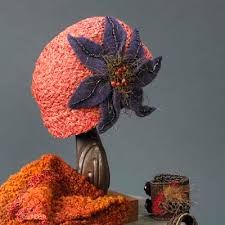
11:30 am – 1 pm
Vic Barr – Woodworking

1 – 2:30 pm Clinton Berry – Whee Thrown Pottery

2:30 – 4 pm
Adam Long – Casting
Jean McMullen – Collage

4 pm – .
Mary Mosblech – Printmaking Note Cards

Everybody come and visit! Did I mention that there would be cake…


Missouri Artist on Main 319 – 321 S. Main Street, St. Charles, MO 63301
(636) 724-1260 www.maomgallery.com
On May 9, 1914, President Woodrow Wilson signed a proclamation establishing Mother’s Day, a national holiday to be celebrated annually on the second Sunday of May. The woman responsible for its inception was Anna Jarvis (1864–1948), who wanted to memorialize her own mother and as a result saw the value in honoring all mothers. In Britain, Mother’s Day is celebrated in mid-Lent as Mothering Sunday. During the Middle Ages a custom developed of allowing those who had moved away to visit their home parishes and their mothers on Laetare Sunday, the fourth Sunday of Lent. Many other countries also celebrate the holiday on this date.
When considering a gift for Mom think of the gallery, Missouri Artist on Main.
Perfect for spring a hand painted and dyed silk scarf.
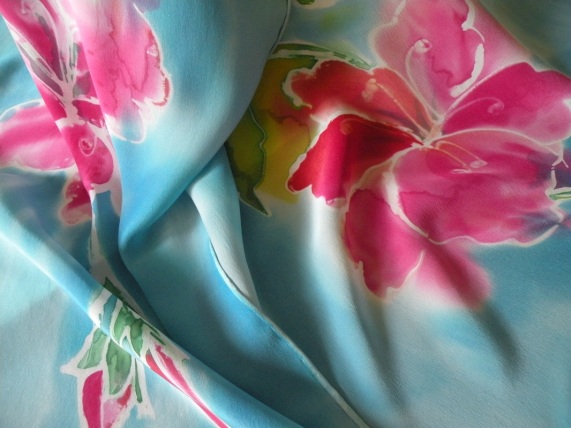
Silk scarf by MAOM artist Joyce Rothermich.
Everyone loves to give and receive jewelry!
 Cloisonne Red and Pink Heart Earrings by MAOM jeweler Kathryn Leventhall-Arnold would be a wonderful way to express your love for Mother.
Cloisonne Red and Pink Heart Earrings by MAOM jeweler Kathryn Leventhall-Arnold would be a wonderful way to express your love for Mother.
MAOM potter Clinton Berry makes wonderful functional work, perhaps a porcelain bowl or baking dish.

Flowers are always appropriate on Mother’s Day. MAOM colored pencil artist Susie Tenzer creates beautiful arrangements that will never fade.

Perhaps spending time with your Mom taking a class in the gallery classroom would be the perfect gift. Check out the listing of upcoming classes at http://www.maomgallery.com or stop by the gallery
Stop by the gallery and let the artists on duty help with your selections.
Happy Mother’s Day to all!
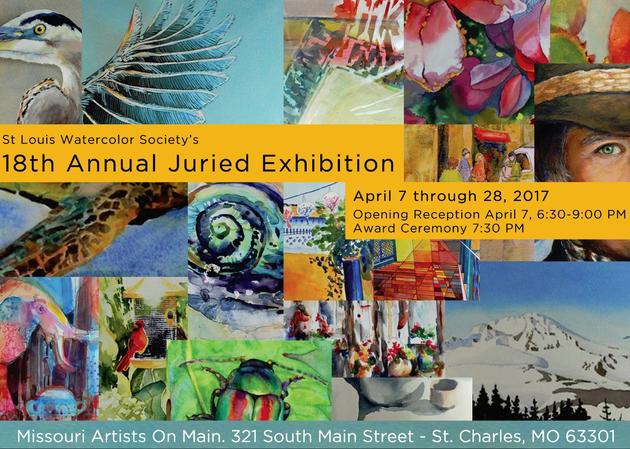

MISSOURI ARTIST ON MAIN
315-321 South Main Street
St. Charles, MO 63301
(636) 721-1260
http://www.maomgallery.com
Watercolor takes center stage during the month of April in the gallery.
Missouri Artist On Main will once again host the St. Louis Watercolor Society’s annual juried exhibition, April 7th through the 28th 2017. Opening reception is April 7th 6:30 – 9:00 p.m. awards ceremony 7:30 p.m.
The exhibition is juried by international watercolor artist and author Alvaro Castagnet. Born in Montevideo Uruguay, schooled at the National School of Art and the Fine Arts University, Alvaro Castagnet travels the world painting, teaching and exhibiting his work.
Alvaro’s award winning work graces the walls of many private and corporate collectors worldwide.

He will teach a two day workshop April 8th and 9th in St. Louis sponsored by the St. Louis Watercolor Society.
His latest book; Watercolor Masterclass: Understanding the four pillars of watercolor was published in 2015 by Artbook24.
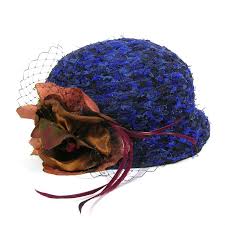

MISSOURI ARTIST ON MAIN
315 – 321 S. Main St. Charles, MO 63301 (636) 724-1260 http://www.maomgallery.com
Hat by MAOM artist Diane Tessman
Milliners create hats for women; hat makers make hats for men.
The term “millinery” is derived from “Millaners,” merchants from the Italian city of Milan, who traveled to northern Europe trading in silks, ribbons, braids, ornaments, and general finery. First chronicled in the early sixteenth century, these traveling haberdashers were received by noble aristocratic households, passing on news of the latest fashions as well as selling their wear. News of the latest styles and variations on dress was as important to men as it was to women, and milliners often acted as much sought-after fashion advisers to nobility all over Europe. One such milliner is mentioned by William Shakespeare in Henry IV part 1, when the gallant warrior Hotspur refers to his encounter with a “trimly dress’d lord” as: Fresh as a bridegroom; and his chin reap’d show’d like a stubble – land at harvest-home; He was perfumed like a milliner; And ‘twixt his finger and his thumb he held a pouncet box. (Hopkins, Susie. “Milliners.” Encyclopedia of Clothing and Fashion, edited by Valerie Steele, vol. 2 Charles Scribner’s Sons, 2005, pp. 411 -415.)
Missouri Artist on Main exhibits the work of two local milliners; Diane Tessman and Kathy Shallow. Each works in a completely different method creating unique, beautiful and fun creations.
Kathy Shallow creates needle felted hats, scarves and accessories from Alpaca wool raised on her two sister’s farms. Kathy says; “Alpaca is such a wonderful fiber to work with, very soft, warm and lightweight.”
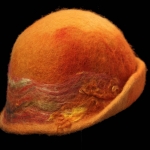
Her hats, scarves, purses and bags are wonderfully dyed in a range of rich colors,
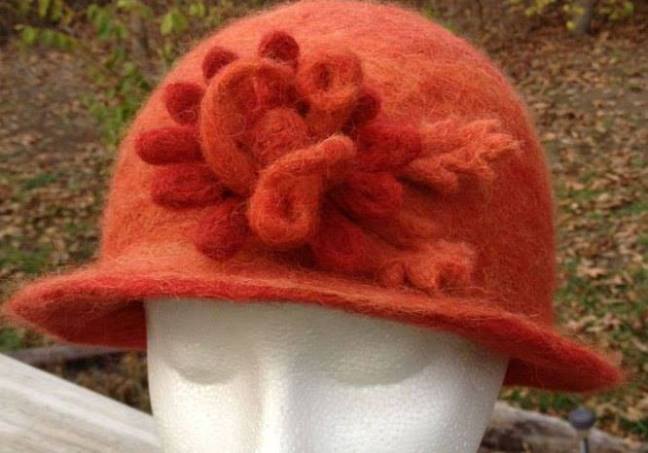
and the felted Alpaca wool feels wonderful.
Diane Tessman carries on a multi generational family tradition that she learned from her grandparents and mother; and that she and her sister continue. Diane said,”Believing heavily in repurposing, we recycle cashmere and lambswool sweaters, blue jeans and pretty much anything that can be redone. Everything is handmade, no forms or ready-made additions. The hats are braided, just as a rug would be braided, and sewn on a commercial machine using a technique of tension in holding the braid. The hat is completely formed when it leaves the machine. Each hat is uniquely different.” (Deer, Karen. “Made in St. Louis: Two sisters keep a family tradition growing by making hats.” St. Louis Post Dispatch, Dec. 27, 2013.)


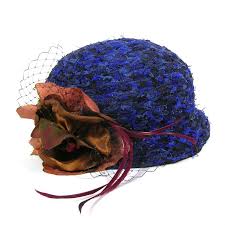
Please visit the gallery to see the work of our milliners.
BTW… once inspired by Diane and Kathy’s work visit an Edgar Degas exhibit featuring hats and paintings, “Degas, Impressionism and the Paris Millinery Trade” is on view at the St. Louis Art Museum through May 7. It is a fantastic exhibit and a chance to view not only major works of impressionism but also a wonderful collections of 40 period hats.


MISSOURI ARTIST ON MAIN
315-321 South Main Street St. Charles, MO
636-724-1260 http://www.maomgallery.com/
Happy Valentine’s Day from Missouri Artists On Main. We want to remind you, we have beautiful gifts for your special someone! Need ideas? We can help. Pick from beautiful hand dyed scarves,

hand painted silk scarf by MAOM artist Joyce Rothermich
handmade hats or woven shawls,

hat by MAOM fiber artist Diane Tessman

felted hat by MAOM fiber artist Kathy Shallow
glass,

tray by MAOM glass artist Kitty Mollman
jewelry boxes plus custom jewelry for her.

earrings by MAOM jeweler Kathryn Leventhal-Arnold
One-of-a-kind handmade wooden boxes,

box by MAOM wood artist Vic Barr
chainmaille jewelry

necklace by MAOM jeweler Melanie Hancock
and stunning photographs for him!

photo by MAOM photographer Clark Willett
We also have gift certificates for gifts and classes. We look forward to seeing you. Treat Yourself while your there!